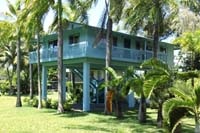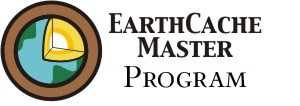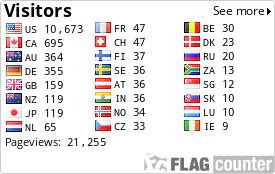
 Tsunami in Waikiki!
Tsunami in Waikiki!
Ho‘Makaukau means "Get Ready" in Hawai‘ian. Hawai‘i is the unofficial "Tsunami Capital of the Pacific."
 source: NOAA National Weather Service Pacific Tsunami Warning Center
source: NOAA National Weather Service Pacific Tsunami Warning Center
Did you know that in Hawai‘i, tsunamis have accounted for more lives lost than all other local disasters?
If you are standing at the posted coordinates, are you aware that you are in a Tsunami Evacuation Zone?
Waikiki is host to thousands of visitors each year, most of them unaware that they are vacationing in an area at risk of tsunami inundation. Tsunami warning signs are scarce in Waikiki, and in fact, one popular travel guidebook makes no mention of the risk at all. Recently, the Tohoku, Japan earthquake of March 11, 2011, and its resulting tsunami triggered evacuation of coastal O‘ahu, including Waikiki.
What is a Tsunami?
 A tsunami is series of waves with long wavelength and periods, most commonly generated by earthquakes, underwater landslides, or volcanic eruptions. Such sudden land movement under the ocean can displace massive amounts of water forming tsunami waves thousands of times more powerful than a typical beach wave. The term tsunami is a Japanese word meaning "harbor wave." Tsunamis are sometimes referred to as "tidal waves", but these deadly waves are unrelated to the ocean's tides. A tsunami is capable of traveling up to 500 miles per hour (~800 km/hr) in the open ocean and at the shore can reach up to 100 feet (30 m) in height.
A tsunami is series of waves with long wavelength and periods, most commonly generated by earthquakes, underwater landslides, or volcanic eruptions. Such sudden land movement under the ocean can displace massive amounts of water forming tsunami waves thousands of times more powerful than a typical beach wave. The term tsunami is a Japanese word meaning "harbor wave." Tsunamis are sometimes referred to as "tidal waves", but these deadly waves are unrelated to the ocean's tides. A tsunami is capable of traveling up to 500 miles per hour (~800 km/hr) in the open ocean and at the shore can reach up to 100 feet (30 m) in height.
Why Hawai‘i is at Risk
 The Hawai‘ian archipelago is positioned in the center of the Pacific Ocean's Ring of Fire. This "Ring" marks the boundaries of the Pacific tectonic plate and is the location of many large earthquakes and active volcanoes. Devastating events around the Ring of Fire include the 1946 Aleutian Islands earthquake and the 1960 Chilean earthquake, both which generated tsunamis that caused millions of dollars of damage and numerous deaths in Hawai‘i.
The Hawai‘ian archipelago is positioned in the center of the Pacific Ocean's Ring of Fire. This "Ring" marks the boundaries of the Pacific tectonic plate and is the location of many large earthquakes and active volcanoes. Devastating events around the Ring of Fire include the 1946 Aleutian Islands earthquake and the 1960 Chilean earthquake, both which generated tsunamis that caused millions of dollars of damage and numerous deaths in Hawai‘i.
But My Hotel Is in an Evacuation Zone...!
 In 1965, 26 countries around the Pacific Rim joined forces to form the Pacific Tsunami Warning Center (PTWC). The detection system consists of deep ocean bottom pressure monitors, seismographs and surface buoys. Acting with local government agencies, Tsunami Evacuation Zones were formed to include land within one mile of shore at sea level, or within 50' of sea level, and additional areas such as inland bays or rivers valleys at risk for inundation.
In 1965, 26 countries around the Pacific Rim joined forces to form the Pacific Tsunami Warning Center (PTWC). The detection system consists of deep ocean bottom pressure monitors, seismographs and surface buoys. Acting with local government agencies, Tsunami Evacuation Zones were formed to include land within one mile of shore at sea level, or within 50' of sea level, and additional areas such as inland bays or rivers valleys at risk for inundation.
 Pacific Tsunami Warning Center Messages
Pacific Tsunami Warning Center Messages
Within minutes of an earthquake ocurring around the Pacific Rim, the PTWC issues a statement indicating the source and severity of a potential tsunami. Warning messages for Distant and Locally Generated tsunamis specify an approximate time for the tsunami to reach shore. If a tsunami is generated by an earthquake or underwater landslide near Hawai‘i, the resulting local tsunami may allow only minutes to evacuate. PTWC Message types include:
Tsunami Warning: A potential tsunami with significant widespread inundation is imminent. Emergency sirens will sound. Radio and television stations will carry official shoreline evacuation instructions through the Emergency Alert System.
Tsunami Advisory: A potential tsunami has occurred, which may produce dangerous currents or waves. Follow local Emergency guidelines.
Tsunami Watch: A distant significant earthquake has occured which has the potential to generate a tsunami. Be ready to take action if a warning is issued.
Things to Keep in Mind:
- Often the first sign of an approaching tsunami is the ocean receding from beaches and harbors. If you are at the shoreline and see this phenomenon, move inland to higher ground immediately. A destructive and potentially deadly wave may follow in less than a minute.
- Do not go down to the shore to watch! The tsunami is not a single wave - subsequent waves in the series may be higher and more powerful than the first. The time period between waves can be as long as one hour.
- If you are near the shore and feel the ground shaking, move inland to higher ground as quickly as possible.
- Move inland to higher ground as directed by media or local authorities. You may be directed to vertical evacuation in the case of a multi-story building.
- Do not re-enter the evacuation zone until the All Clear message has been broadcast by local authorities.
 Tests of civil defense sirens and the Emergency Alert System are conducted simultaneously, normally at 11:45 am on the first working day of the month, in cooperation with Hawaii’s broadcasting industry.
Tests of civil defense sirens and the Emergency Alert System are conducted simultaneously, normally at 11:45 am on the first working day of the month, in cooperation with Hawaii’s broadcasting industry.
Additional Disaster Preparedness information is located in the front section of the white pages of most Hawai‘i telephone directories.
Logging Requirements:
Please remember this is an EarthCache, there is no physical container to find at the posted coordinates.
The posted coordinates bring you to a tsunami siren in Ainahau Triangle Park in Waikiki. To claim this earthcache as "Found", send us a note through our profile on geocaching.com with your answers to the following items:
- The text "GC32XEG Waikiki Tsunami" on the first line
- The number of people in your group
- At GZ, observe your surroundings in all directions. The tsunami evacuation zone reaches to elevations 50' above sea level. In your note to us, tell us if any of the closest buildings would be safe, and where you would evacuate to if a siren sounded while you were standing here.
- Go to the following link for the NOAA National Weather Service Pacific Tsunami Warning Center Tsunami Evacuation Zone Maps. Enter your hotel address, or if lucky you live Hawai‘i, your home address. In your note to us, tell us whether the location is in an evacuation zone, and where you would evacuate to in case of a tsunami. Please do not send us the actual address. If you do not have access to the Internet, check the Tsunami Evacuation Maps in the Disaster Preparedness Guide in the front of all Hawai‘i State telephone books.
- After sending us the requested information go ahead and log your find.
For additional information:
Tsunami Safety & Preparedness in Hawai‘ from NOAA National Weather Service Pacific Tsunami Warning Center
Tsunami FAQs and Warning Levels from the NOAA National Weather Service
Tsunami Questions and Answers from the Department of Emergency Management, City and County of Honolulu
Ultimate Tsunami - Honolulu, Hawai‘i National Geographic video showing an animated CGI tsunami crashing into Honolulu.



